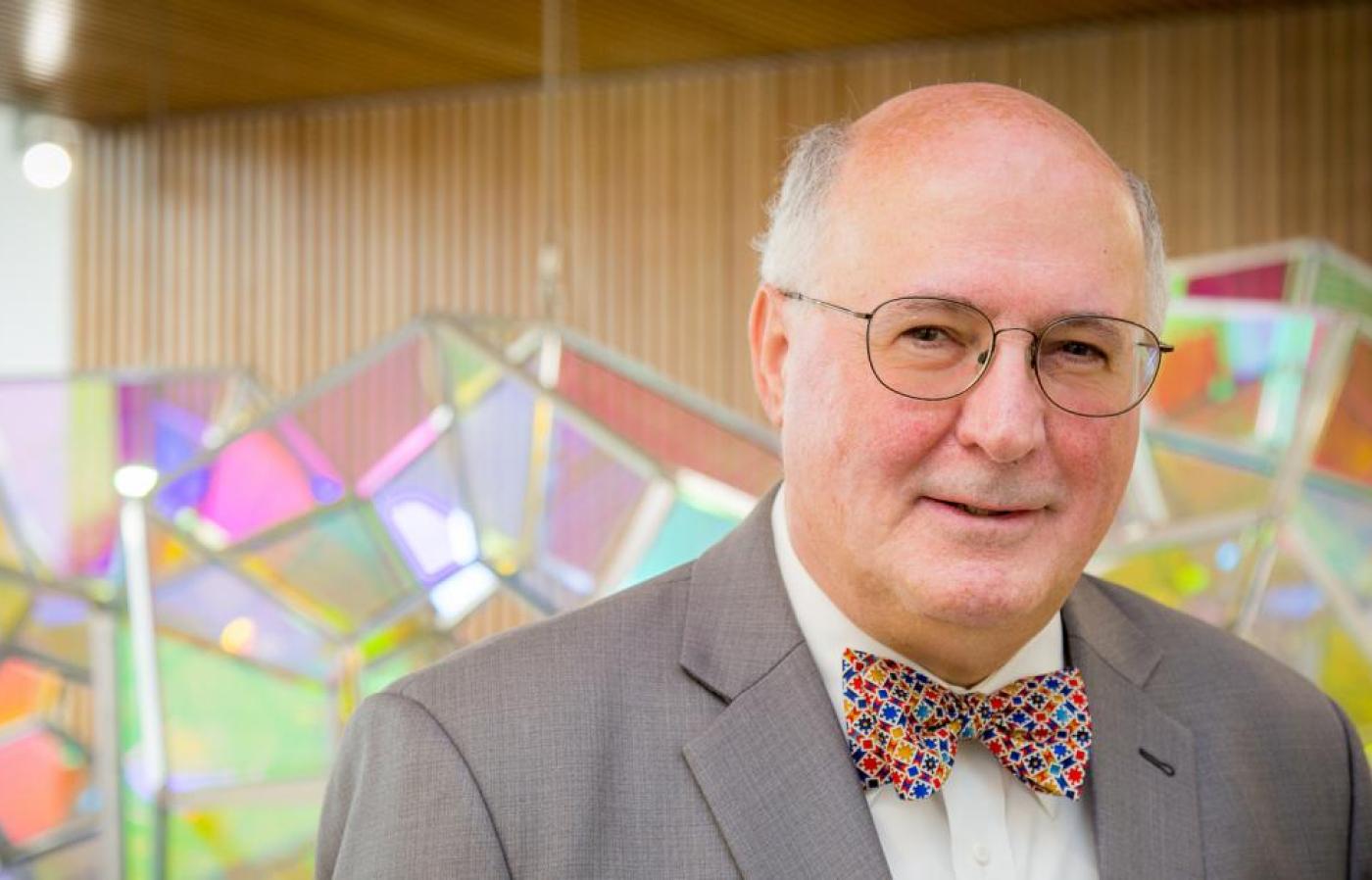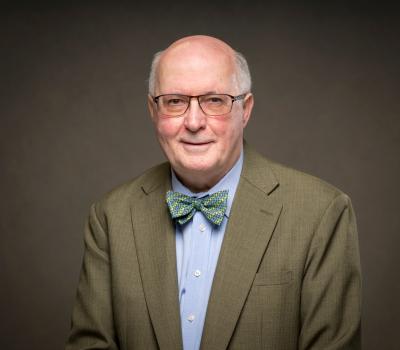
Goran Jovanovic, professor of chemical engineering at Oregon State, was interested in finding ways to convert carbon dioxide into useful products using renewable energy. When the U.S. Department of Energy rejected a proposal in 2005, Jovanovic sent out an email to former Ph.D. students around the world, looking for potential collaborators. A copy of that email landed in the inbox of Thana Sornchamni, leading to an enduring and mutually beneficial partnership with PTT, Thailand’s biggest industrial giant.
Transcript
Keith Hautala: This season on "Engineering Out Loud" we're covering some of our strategic research partnerships with industry, academia, and government. With these collaborations, our researchers at the Oregon State College of Engineering are helping to design new and improve current energy systems, build safer infrastructure, improve computer security, and advance communication. Now, on with the show.
[MUSIC: "The Ether Bunny," Eyes Closed Audio, used with permissions of a Creative Commons Attribution License]
NARRATOR: From the College of Engineering at Oregon State University, this is Engineering out Loud.
Hautala: Welcome to the fourth season of "Engineering Out Loud." I'm Keith Hautala. Joining us on today's podcast is Goran Jovanovic, professor of chemical engineering, here at Oregon State.
Jovanovic: The story actually started in 2005. I put together a very nice team here at OSU, and we wrote what I thought was an excellent proposal to the Department of Energy. This was about converting carbon dioxide into useful products.
Hautala: Not everybody was enthusiastic about the team's proposal.
Jovanovic: This was something that, I guess the U.S. government couldn't even accept in 2006; by doing so, one would have to admit that there is global warming, that CO2 is a bad player in there.
Hautala: Dr. Jovanovic was more than a little surprised by the response:
Jovanovic: It came back with great disappointment that we were not chosen for that particular grant, but what was really defeating was a pretty lousy review, which was totally disconnected from the content of what we were proposing. And I started thinking, well, perhaps we could ask somebody else to fund this.
Hautala: So, Dr. Jovanovic sent out an email to friends, colleagues, and former graduate students around the world, looking for potential international partners. A copy of that email landed in the inbox of his old friend and former-Ph.D. student, Thana Sornchamni.
He just happened to be working in Bangkok for Thailand's largest company, PTT, a Fortune-global-500 company with major holdings in oil and gas.
Jovanovic: He responded, "Oh, yeah, we are interested. So, how can we start that?" And I said, "How about having a conference or workshop at your place, and I will give you a three-day workshop on microscale-based technologies," which was my area of interest, "and we'll see where your interest is to develop something out of that."
Hautala: Sornchamni took the ball and ran with it, arranging all of the details of that first meeting. Dr. Jovanovic got on a plane and headed to Bangkok, not quite sure what to expect.
[tuk tuk]
Jovanovic: So, here I am in Bangkok for a whole week - three of those days I was, really, maintaining a workshop. On Tuesday morning when I walked into the room, there were over 60 people sitting there, waiting for me, and I could not imagine that that would happen for me, ever. These were contacts that were very, very useful.
[MUSIC: "Peaceful Midnight Beauty," Lobo Loco, used with a permission of a Creative Commons Attribution-NonCommercial-NoDerivatives Attribution License]
And that's how it started.
Hautala: These contacts included engineers, scientists, business leaders, and representatives from some of Thailand's biggest national universities. The eagerness for collaboration was mutual.
Jovanovic: We were imagining our involvement with the local industry. Our exchange programs, advanced degree programs, dual-degree programs -- nobody has to imagine that anymore. It all happened. At the two universities there, there is an office where it says "Oregon State University" and my name underneath, and at PTT, they have a huge research center. If we walk in, we have labs. We teach over there, we do the research, we have joint graduate students, we are part of their committees, they're part of our teaching here. Pretty soon, there will be books coming out that are a reflection of this new work that we've done the last ten years.
Hautala: But, we're getting a little ahead of ourselves, here. First, there were some legal and logistical hurdles to get over in order to get this international partnership off the ground.
Jovanovic: They wanted to know if we are an incorporated, legally incorporated entity. And, yes, we are. There is a handwritten document from the late 19th century sitting in archives in Salem, which says that OSU, or College, Agricultural College of Oregon, is incorporated, and one church in town was the guarantor for that incorporation on our side. And we gave them that document.
Hautala: Over the next ten years, Oregon State's partnership with the PTT and the Bangkok Universities grew and deepened through a series of collaborative projects to develop new technologies. When it comes to collaborations between industry and academia, there are a couple different ways it can go.
Jovanovic: One form of collaborating with the industrial partners is to get there and solve their problems. And universities are actually not particularly well-equipped to play that role, solving industrial problems.
Hautala: Dr. Jovanovic had a different kind of approach in mind.
Jovanovic: We come to the table, we tell them, look, there is this technology that we know something about, look at that, see if you're interested in that, and we can work together.
Hautala: That brings us back to where we started. Remember that CO2 conversion project that the Department of Energy rejected in 2006?
Jovanovic: That failed DOE project that the U.S. government didn't have money to fund eventually got funded by these guys and while, believe it or not, an oil and gas company was interested in developing CO2 conversion technology, which is beyond sequestration underground, you know. It's really using renewable energy to convert CO2 into useful products.
Hautala: It might seem a bit surprising that a major oil and gas conglomerate would be interested in CO2 conversion technologies using renewable energy. But, perhaps nobody was more surprised than Dr. Jovanovic himself.
Jovanovic: I was greatly surprised. That was pretty early in the game with the PTT, that they opt for programs like that. It was hard to me, out of the cynicism of the U.S. market, to imagine that oil and gas companies were interested in technologies of converting CO2 into useful products. But they have their incentives there - they get tax breaks if they take care of their CO2. They produce a lot of CO2 with natural gas, because natural gas comes with a certain amount of CO2 in it, and they separate it. And they have streams of CO2 that go into the sky, and they wanted to convert that.
[MUSIC: "Peaceful Midnight Beauty," Lobo Loco, used with a permission of a Creative Commons Attribution-NonCommercial-NoDerivatives License]
Hautala: One of the methods the partnership worked to develop uses something called a cold corona process to convert carbon dioxide into larger organic molecules.
Jovanovic: It's a very, very interesting process. Essentially, at room temperature, one can perform the activation of CO2, which gets all kinds of radical forms, and then in essence, we can produce any hydrocarbon, even diesel or gasoline, out of it. It may not end up going that way - there is a little bit more fundamental route: we convert CO2 to ethylene, and ethylene is a debase of petrochemistry. So, once we have ethylene, then it could be routed into a petrochemistry without us going after heavier molecules because there are billions of dollars invested in petrochemical plants that could use that as a starting compound.
Hautala: Now, if you're like me, and by that I mean not a chemical engineer, the words "cold corona" might make you think of a nice, refreshing adult beverage,
[beer bottle cap opening, pouring]
perhaps with a wedge of lime.
Jovanovic: No, no,
[MUSIC: "Coronas of the Sun," Fearless Super Pictures, used with permission of a Creative Commons Attribution-NonCommercial License]
cold corona is actually that little glow that one can see during the discharge, the electrical discharge, and it's a nice and stable discharge where electrons are flying and activating, hitting the molecules and activating molecules. Lightning is creating a plasma just as well, but that is highly thermal, and a lot of energy that goes to thermal is invisible wavelengths. Cold corona, there is a nickname for it, the "dark corona." You hardly see it. Every time you see it, that means it's warm and emits a light, and that means it's inefficient.
Hautala: As it turns out, the cold corona process is very efficient.
Jovanovic: The thing that excites us is that we take 100 units of renewable energy and we've converted 95% of that into a chemical potential. In other words, it goes into the energy of chemical bonds. That is remarkable because no thermochemical process is that efficient.
Hautala: Thermochemical, or catalytic processes, max out at about 40% efficiency. So, in terms of energy conversion, it's no contest. But, that's just part of the story.
Jovanovic: Actually, it's not that much about the energy conversion, it is the fact that we have a process that works at room temperature, as opposed to thermochemical, which works at seven, eight-hundred, nine-hundred degrees C, where you run out of materials and whatever you have is highly expensive and it's a totally different game where you can work in polymers and glass and things that are household materials.
Hautala: A few years ago, Dr. Jovanovic was invited to speak at PTT's "Innovation Days" event. It's kind of a big deal, with all of the company VIPs in attendance. The company's CEO, Narongsak Jivakanun, who also just happens to be an Oregon State alumnus, came up to talk to Dr. Jovanovic after his speech.
Jovanovic: He knew me by first name and he said, "Goran, we are a research-based company, meaning we depend on oil and gas. These resources are limited, so our growth in the future is limited. We have to create resources which are unlimited." And he said, "The only unlimited resource is knowledge, so we will be a knowledge-based company in the future."
Hautala: Helping companies move from resource to knowledge-based models is something research universities excel at. This is the type of partnership that lets people like Dr. Jovanovic do their best work. Instead of academic researchers help industry to solve its own problems in the short-term, they get to work with industry to create a better future by solving global problems in the long-term. This past March, Dr. Jovanovic and a sizable contingent of Oregon State colleagues traveled to Bangkok. There, they participated in a joint conference commemorating ten years of partnership with Thailand's biggest industrial giant. This episode was produced by me, Keith Hautala, with additional audio help from Brian Blythe. Say hi, Brian.
Blythe: Hello.
Hautala: Our intro music is "The Ether Bunny," by Eyes Closed Audio on Soundcloud, and used with permission of a Creative Commons Attribution License. For more episodes,
[MUSIC: "The Ether Bunny," Eyes Closed Audio, used with permissions of a Creative Commons Attribution License]
visit engineeringoutloud.oregonstate.edu or subscribe by searching "Engineering Out Loud" on your favorite podcast app.
